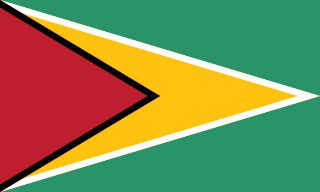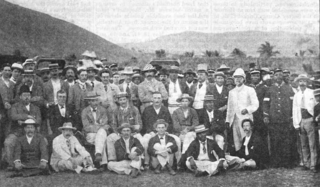
The Barbados national cricket team is the national cricket team of Barbados, organised by the Barbados Cricket Association (BCA). Barbados is a member of the West Indies Cricket Board (WICB), which is a member of the International Cricket Council (ICC) in its own right, and Barbadians play internationally for the West Indies cricket team.

The Guyana cricket team is the representative first class cricket team of Guyana. The side does not take part in any international competitions, but rather in inter-regional competitions in the Caribbean, such as the Regional Four Day Competition and the Regional Super50), and the best players may be selected for the West Indies team, which plays international cricket. The team competes under the franchise name Guyana Harpy Eagles.
Maurius Pacheco Fernandes, known as Maurice Fernandes, was a West Indian Test cricketer who played first-class cricket for British Guiana between 1922 and 1932. He made two Test appearances for the West Indies, in 1928 and 1930. Fernandes played as a right-handed top-order batsman and occasional wicket-keeper. He scored 2,087 first-class runs in 46 appearances at an average of 28.20.
Bourda, or officially Georgetown Cricket Club Ground, is a cricket ground in Georgetown, Guyana, used by the Guyanese cricket team for matches with other nations in the Caribbean as well as some Test matches involving the West Indies. The ground is one of the two cricket stadiums in the South American mainland and is uniquely surrounded by a moat for flood-prevention and drainage reasons.
The County Ground in Southampton, England was a cricket and football ground. It was the home of Hampshire County Cricket Club from the 1885 English cricket season until the 2000 English cricket season. The ground also served as the home ground for Southampton Football Club from 1896 to 1898.
This article describes the history of West Indies cricket to 1918.

A team of amateur cricketers under the captaincy of Robert Slade Lucas toured the West Indies in the 1894-95 season, playing matches between January and April 1895. They played a total of 16 matches of which eight are regarded as first-class. It was the first visit of an English cricket team to the West Indies.
This article describes the history of West Indies cricket from 1946 to 1970.
Somerset County Cricket Club made their debut in first-class cricket in the 1882 English cricket season. They were captained by Stephen Newton, and played eight first-class matches, five against county opposition, two against the Marylebone Cricket Club and one against the touring Australian team. They only won one of the eight contests, that against Hampshire at Taunton. Of the other matches, one was drawn and the other six were all losses for Somerset. Wisden Cricketers' Almanack described the season as "disastrous", but the publication qualified this statement with mild optimism for 1883.
The Guyana Defence Force Ground is a multi-use stadium on Vlissengen Road in Georgetown, Guyana.
Frederick Maxwell Bury was an English cricketer who played two first-class matches for Demerara, an antecedent of the present Guyanese national side, while resident in British Guiana in the 1860s.
Oscar William Weber was a Guyanese first-class cricketer.
Everest Cricket Club Ground is a cricket ground in Georgetown, Guyana.
Progress Park is a cricket and football ground in Grenville, Grenada.
Blairmont Sports Club Ground is a cricket and football ground in Blairmont, Guyana.
Enmore Recreation Ground is a cricket and football ground in Enmore, Guyana.
The Uitvlugt Community Centre Ground is a cricket and football ground in Uitvlugt, Guyana.
Bay Pasture was a cricket ground in Bridgetown, Barbados.
The Police Sports Club Ground is a cricket ground in Bridgetown, Barbados.
Alpart Sports Club Ground is a cricket ground in Nain, Jamaica.



